Menu

Did you know, over 25% of facilities break environmental rules in many compliance programmes? This big number shows that breaking these rules is a big problem. The legal implications of not following environmental rules can be very serious.
The US has strict rules for protecting the environment. They are controlled by the Environmental Protection Agency (EPA). These rules protect the land, air, and water and make sure dangerous waste is handled safely. But, some companies try to avoid the costs of following these rules. This can lead to fines, being watched closely, or even going to prison. Breaking environmental laws is seen as a type of white-collar crime. The punishment is often more than what a company can earn by dodging the rules.
Keeping up with environmental rules is key for both our current operations and our planet’s future well-being. It includes looking after the air, water, and protecting animal homes. Laws like the Clean Air Act work to reduce air pollution. And the Clean Water Act helps keep our waters clean.
Sticking to these rules means getting the right permits, checking regularly, and following Environmental Management Systems like ISO 14001. This way, industries work safely, avoiding fines and helping the environment and people thrive. The CERCLA law that started in 1980 is crucial for cleaning up dangerous waste sites.
Breaking these eco-rules can cost a lot in fines, court fights, and business slowdowns. Laws such as the RCRA say how to get rid of dangerous waste properly. Following these laws is not just about keeping the planet and people healthy. It’s also about being a good and smart business.
Setting up strong rules can make a business better, less wasteful, and cleaner. It shows others how to responsibly run a company. By working together with the laws, companies can help the environment, creating a brighter future for all.
| Law | Year Enacted | Main Focus |
|---|---|---|
| Clean Air Act (CAA) | 1963 | Air Quality Standards |
| Clean Water Act (CWA) | 1972 | Water Quality Standards |
| Resource Conservation and Recovery Act (RCRA) | 1976 | Hazardous Waste Disposal |
| Comprehensive Environmental Response, Compensation, and Liability Act (CERCLA) | 1980 | Hazardous Waste Cleanup |
| ISO 14001 | 1996 | Environmental Management Systems |
The United States has put in place many important environmental rules to keep people and nature safe. These rules deal with pollution and how to handle dangerous waste. They require everyone, from big companies to individuals, to follow certain standards. In this section, we’ll look at three key laws: the Clean Air Act (CAA), the Clean Water Act (CWA), and the Comprehensive Environmental Response, Compensation, and Liability Act (CERCLA).
The Clean Air Act (CAA) became a major federal law in 1963. It was changed a lot in 1970 and 1990 to do more. This law controls the dirty air that comes from factories and vehicles. The Environmental Protection Agency (EPA) sets limits on how much pollution is allowed. Companies must follow these rules to keep everyone safe and avoid getting into big trouble with the law.
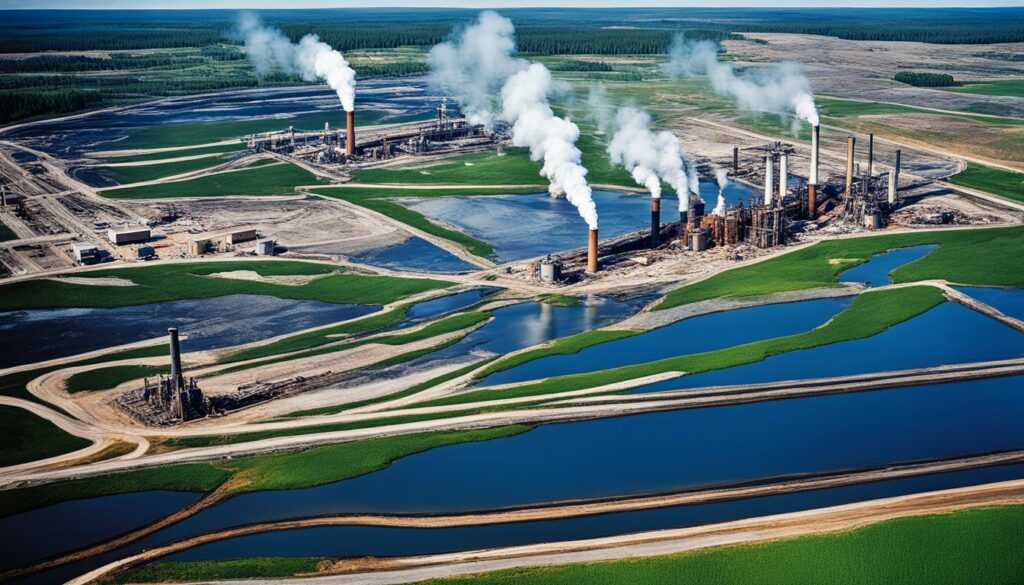
The Clean Water Act (CWA) began as a law to control pollution in 1948. It was updated heavily in 1972. This act makes sure that U.S. waters are clean for everyone. It’s very important for keeping our rivers and oceans safe from harmful waste. Companies face big legal trouble if they don’t follow the CWA’s rules. So, they must work hard to protect the water and obey these laws.
It started in 1980, the Comprehensive Environmental Response, Compensation, and Liability Act (CERCLA) commonly called Superfund deals with cleaning dangerous waste sites. This law allows the EPA to find those responsible and make them help clean up. Not following CERCLA brings serious legal consequences, like heavy fines. So, companies should fully follow CERCLA’s rules to prevent harming the environment and facing legal problems.
The United States has a detailed set of federal and state laws, with help from global treaties, ensuring the environment is safe. It’s crucial for businesses to follow these rules. Doing so helps them avoid financial penalties and legal trouble. This is if they don’t meet environmental standards.
There are big federal laws, such as the CERCLA and the CAA, that set out how we manage harmful waste and work to clean up the air and water. Companies must comply with these laws. This can make their operations more expensive as they work to meet strict environmental standards.
On top of the federal laws, different states have extra rules. States like California are leaders in environmental protection. They have their own strong laws, such as the CEQA, which requires thorough checks on how projects might affect nature. It is essential for businesses to follow both state and federal rules to avoid fines and legal issues.
Globally, agreements like the Paris Agreement and others focus on fighting climate change and protecting wildlife. They urge nations to update their own laws. This helps everyone work towards the same environmental goals. Not following these international rules can lead to serious legal problems.
The Environmental Protection Agency (EPA) plays a key role in America’s fight for a clean environment. They set and keep up environmental rules, research, and help other government bodies. This keeps everyone working together to protect our planet.
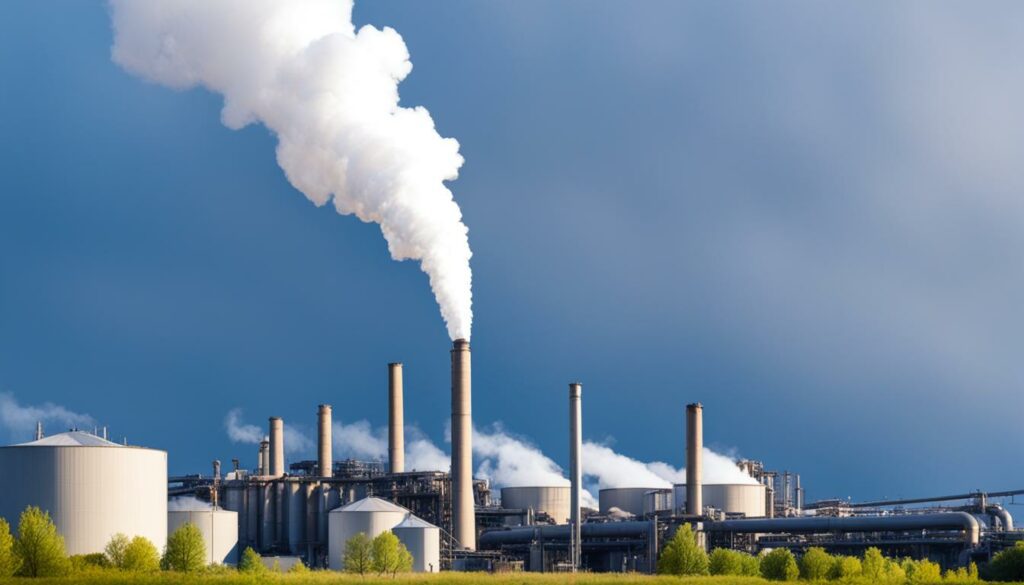
The EPA guides places on how to follow eco-laws, even when something unexpected happens. An example is a memo from March 26, 2020, about COVID-19’s effects on following the rules. This memo talks about a rule change, starting from March 13, 2020, to balance being strict with understanding during a crisis.
If places want special allowance, they must record and lessen harm from breaking rules. They must also quickly get back to following the laws. This rule ensures that breaking eco-laws still has serious consequences, leading everyone to act responsibly and openly.
The EPA focuses on serious pandemic risks to people or nature. This shows that breaking environmental laws will not be overlooked, even in hard times. Their goal is to lessen both immediate and long-term damages to our environment.
Also, the EPA says that places must prevent and handle accidental pollution spills. They say that even emergencies are not an excuse to break the rules. This helps avoid making our environment worse, keeping it healthy for everyone.
The EPA gives special instructions to places that handle dangerous waste if they can’t move it quick enough. These steps show how the EPA can adjust while making sure eco-standards are still met.
Sometimes, the EPA allows special actions for really important services. They do this carefully, considering each situation. This shows how the EPA works with a balance between essential needs and protecting our planet.
Companies that follow the laws must keep good records of their checks. They should show these to the EPA if asked. This openess helps make sure that breaking the rules leads to proper punishment, and encourages everyone to act wisely.
In short, the EPA leads the way in keeping America’s environment safe. They always enforce the rules, showing that breaking eco-laws has big consequences. Their work encourages everyone to work towards a cleaner, safer world for now and the future.
Breaking environmental rules happens too much, harming nature a lot. Main offences include:
This kind of rule-breaking has serious repercussions. It often shows a lack of care for doing what’s right. Because of this, if someone breaks these rules, they could face big fines, probation, or even go to jail, especially if they ignore the rules on purpose. This shows how crucial it is to follow these laws to escape hefty penalties.
Not following environmental laws is seen as a white-collar crime. Some companies would rather pay a fine than follow these rules. This choice hurts nature more and makes the environmental problems worse.
These crimes come with various sanctions under federal and state laws. Here’s a brief overview of the punishments for each violation:
| Violation | Common Repercussions |
|---|---|
| Improper waste disposal | Hefty fines, probation, short-term imprisonment |
| Oil spills | Massive penalties, clean-up costs, potential jail time |
| Illegal pesticide use | Fines, regulatory sanctions, legal action |
| Exceeding emission caps | Penalties, operational restrictions, probation |
Important laws like the Clean Air Act and many others help keep things in line. States also have their regulations, and there are global agreements too, protecting the world.
The Environmental Protection Agency (EPA) is in charge of making sure these rules are followed. Even with their efforts, rule-breaking keeps happening, challenging how well laws are enforced.
It’s crucial that people know the severe sanctions violating environmental regulations can bring. Upholding these laws protects our health and the future of our planet.
Not following environmental rules can lead to big problems. This includes fines, probation, and sometimes prison. It’s all to protect the planet from harm done by ignoring these rules.
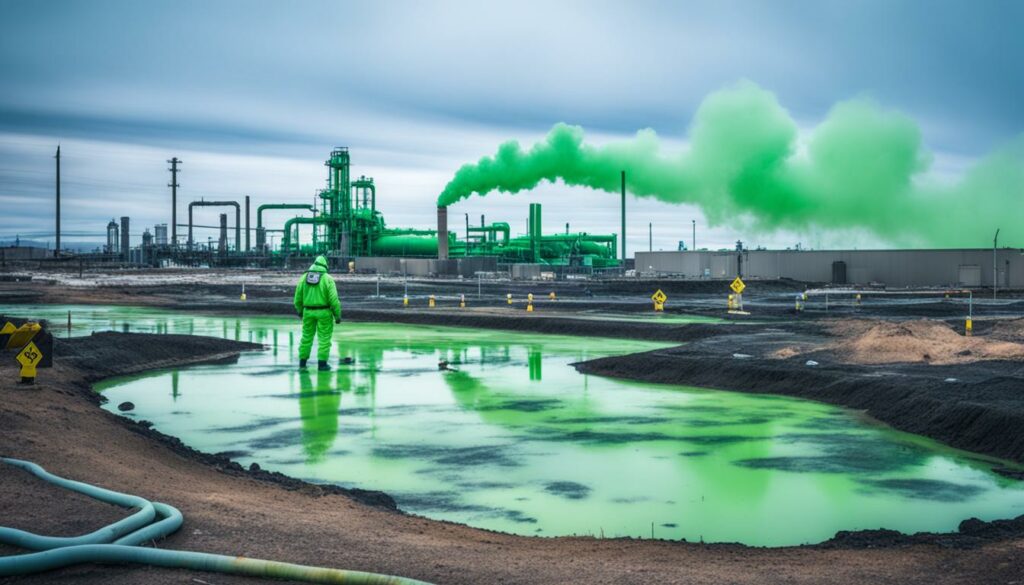
One common punishment is having to pay a fine. Sometimes, businesses in the US choose to pay these fines. They do this when it’s cheaper than following the rules. This makes sure it’s better for companies to do the right thing from a money perspective.
Individuals might face probation or go to jail if they break the rules. This is especially true for serious or repeated violations. Crimes against the environment can include things like littering or putting out too much pollution.
Big companies are watched closely to make sure they’re following the law. Cases like BMW getting a big fine in South Korea or Google in France show this. Joe Fresh’s story also stands out after a tragic building collapse in Bangladesh.
This shows why it’s very important for both companies and people to stick to the rules on protecting our environment. We have also included a table summarising the discussed penalties at the end.
| Type of Penalty | Description |
|---|---|
| Fines and Financial Penalties | Imposed to neutralise illicit benefits |
| Probation and Jail Time | Applied to individuals for serious violations |
| Corporate Fines | Hefty fines for corporations to enforce accountability |
Not following environmental rules can lead to more than just paying fines. Companies often spend a lot to meet strict eco-laws. Or, they choose to pay fines rather than keep up with costly rules.
Breaking these laws includes things like dumping toxic waste or using illegal pesticides. This counts as a serious crime. Companies face fines, probation, or even go to jail, especially for big violations.
The environment is protected by federal laws like the Clean Air Act and the Clean Water Act. These laws help with everything from trash dumping to saving wildlife.
States add their own environmental rules to support federal ones. Internationally, there are also treaties for saving nature and seas. This shows how important the planet’s health is for everyone.
If businesses ignore eco-laws, they could deal with more than just fines. Bad behaviour can hurt a company’s name, stop work, or bring long fights in court. The EPA and groups like Greenpeace watch and teach about these important laws.
Historical examples show how breaking environmental laws harms both nature and people. They tell us about the serious legal troubles that follow if we don’t follow the rules. This is true for everyone, from individuals to big companies.
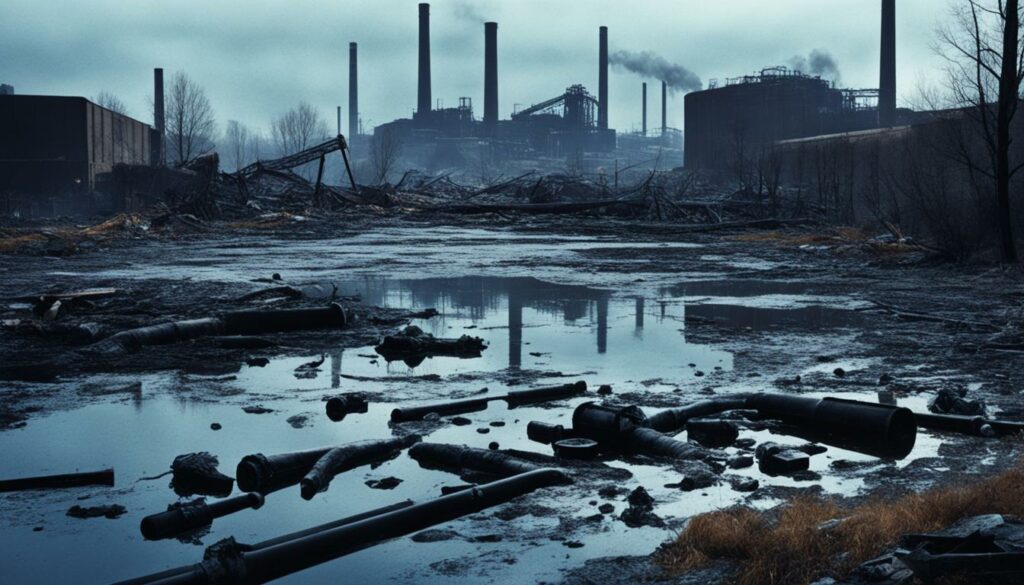
The Exxon Valdez oil spill in Alaska left a huge oil mess in 1989. It caused major harm to animals and plants, and cost a lot of money to clean up. The BP oil spill in 2015’s Gulf of Mexico is another sad story. It hurt sea life and the local community.
Some companies dump waste carelessly to save money, but it leads to big trouble. For example, the Sterlite Corporation in India did illegal things that harmed the water and soil. When it was shut down, it caused a lot of economic damage, showing how breaking the rules can be costly.
| Case | Violation | Repercussions |
|---|---|---|
| Exxon Valdez Oil Spill | Oil Contamination | Ecological Damage, Financial Losses |
| Sterlite Corporation | Unlicensed Production, Waste Disposal | Water Contamination, Economic Losses |
Using harmful chemicals without permission is very dangerous. The Sterlite Corporation’s actions led to more cancer and breathing problems because of toxic substances in the ground. It teaches us how important it is for companies to follow the rules strictly to avoid harm.
The sad truth is that many times, companies don’t follow the rules and it causes a lot of damage. To avoid getting into trouble, companies should focus on doing things right from the start. They need to carefully follow all the laws to protect people’s health and the environment for everyone’s benefit.
Environmental lawyers are key in making sure people and companies follow the law. They help them understand environmental rules. These rules cover things like pollution, how we use land, and protecting animals. If these laws get broken, it can cost a lot of money. Environmental lawyers work to lessen these costs by helping their clients do the right thing.
These legal experts are often in court, fighting for their clients. They sue those who break environmental laws. By doing this, they protect the environment and make sure communities get fairness. They are also big in making new laws. They work with governments and groups to make laws that help the planet.
These lawyers also push for looking after nature wisely. They help cut down on things that harm the planet, like too much pollution. They’re big supporters of using clean energy. They protect animals and their homes by fighting for laws that keep the environment safe.
Companies need environmental lawyers to keep their impact on the planet small. These laws about the environment do a lot for our health. They keep the air and water clean, helping people stay healthy. The work environmental lawyers do is really important. It helps make our world safe for everyone and everything.
Environmental Management Systems (EMS), like ISO 14001, help firms boost their green game and follow rules. They bring a bunch of pluses too. For example, better eco ways, sticking to rules more easily, less pollution, and saving resources.
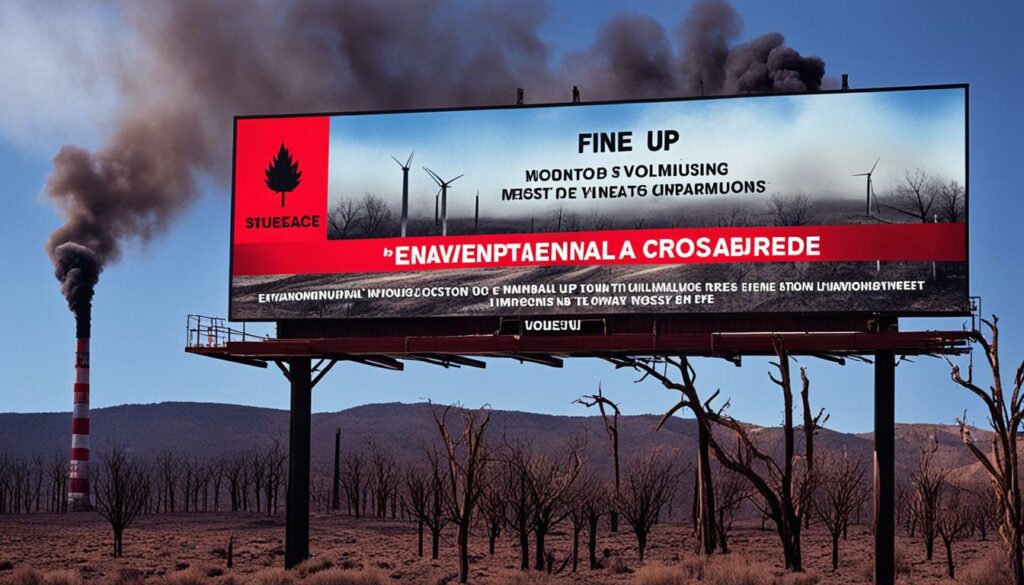
Firing up an EMS lets firms not just watch their eco mark, but also get better all the time. This can lead to meeting new customers and markets, cutting costs, and happier workers. Plus, it makes a firm look golden to outsiders like the public, rule makers, and investors.
But, all these boons need some cash. The main expense of setting up an EMS is from staff time and boss skills, plus worker time, advice fees, and teaching staff. Even with these costs, the big wins show how vital these systems are.
The ISO 14001 rulebook started in 1996. It uses a plan-do-check-act way. The steps are Commitment and Policy, Planning, Getting Things Done, Checking, and Keeping Up. This set-up is used by top names, such as the Smithsonian, to look after their green patch.
Getting the boss on board is key to making EMS work well. Firms need to write down how they’re going to hurt the planet less. They should then look at their day-to-day running to spot and fix any eco harm. This makes sticking to eco laws easy.
To wrap up, having an EMS can save firms from big fines and legal mess-ups. Going green right, following rules, and cutting pollution are vital parts of doing business ethically and sustainably.
Ensuring businesses follow environmental laws needs a mix of legal and organisational steps. Companies must cover all parts of their work to steer clear of penalties for non-adherence to eco-friendly policies and other legal issues.
Getting proper permits and licences is a key first move. You must know the rules for your industry and area. Following these steps greatly cuts the risk of breaking repercussions breaching environmental laws, making sure your work is legally sound right at the start.
Keeping a close eye and reporting accurately are vital for being green. With the right tools, companies can watch their green footprint as they go. This keeps them legal. Reporting regularly shows good governance and spots places to get better, dodging penalties for non-adherence to eco-friendly policies.
Building a ‘by the book’ culture starts with teaching and raising awareness. Everyone must know the green rules for their job. Learning and growing keeps mistakes away and builds an actively green team.
Overall, these steps get a company walking side by side with environmental laws. They cut the chance of big legal hits. These efforts do more than save the planet. They boost the business’s name and how well it runs.
Firms often spend a lot on green technologies to stay within the law. But, this early cost can lead to saving money later and working more efficiently. Many companies see less waste and spend less on energy because they stick to the rules. Laws like the Clean Air Act and Clean Water Act, set by the EPA, show why it’s smart to go green.
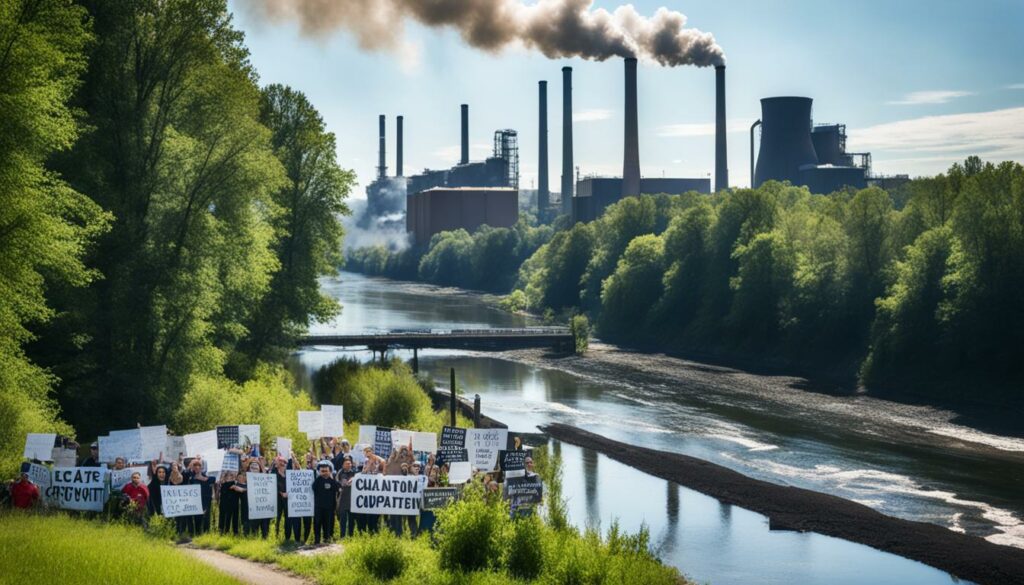
Not following these laws, though, can ruin a company’s finances. If a business breaks the law badly, it might face huge fines, repair costs, and have to pay for any harm done. It’s been noticed that many places don’t stick to the rules, with as many as 70% wrongfully acting. This not only costs money but harms the company’s image, which makes things even worse financially.
For example, the EPA found that over 25% of firms break the law in nearly all areas they check. This shows how important it is to always follow the rules to avoid the costs of bad behaviour. By being good, a business looks better, helps keep the public healthy, and stands stronger in the market.
| Compliance Aspect | Financial Impact |
|---|---|
| Investment in Sustainable Technologies | Initial high cost; Long-term savings & operational efficiency |
| Consequences of Non-Compliance | Hefty fines, compensatory damages, tarnished reputation |
| Violation Rates | 25% – 70% |
Although the money and effort needed to follow the laws might seem a lot at first, it pays off in the long run. By sticking to the rules, businesses can avoid many big penalties. The strong rules from the EPA make it clear that it’s less risky to go green than to break the law.
Getting people involved is key to making good environmental laws that work for everyone. The UN set the Sustainable Development Goals (SDGs) in 2015 to help make our future better. These goals show why community input, across 169 targets, is vital. By hearing from different people, laws and policies can be fairer and planet-friendly.
Local people must be part of deciding on environmental stuff like using land or water. Article 25 of the International Covenant on Civil and Political Rights (ICCPR) ensures this. It lets us have a say, vote, and use public services. By working with experts and those in charge, we all help make better choices. This keeps us all honest and solves penalties non-adherence eco-friendly policies.
The Office of the High Commissioner for Human Rights (OHCHR) says getting everyone involved is crucial for the planet. It teaches us to be active in decision making and stop sanctions violating environmental regulations. Youth, making up a big part of the world, must help to make it better and safer for the future.
Hearing what the public thinks through meetings and feedback is vital. Laws like Environmental Impact Assessment (EIA) and Strategic Environmental Assessment (SEA) require public views. Acts about water and air quality also make sure we have a voice in making better decisions.
Being up to date and talking at meetings makes sure the right steps are taken. It helps avoid mistakes and keeps the process honest. The Rio Declaration and the Aarhus Convention say we all should have info, a say, and fairness in environmental matters.
| Aspect | Details |
|---|---|
| UN SDGs | Adopted in 2015, 17 goals targeting sustainability. |
| ICCPR | Article 25 underlines the right to engage in public affairs. |
| OHCHR Report | Published in 2015 on enhancing public participation. |
| Aarhus Convention | Principle 10 emphasizes access to information and justice. |
| Key Directives | Water Framework, Air Quality, Waste Framework Directives. |
| Youth Engagement | 30% of the world’s population playing a significant role. |
By making sure everyone can join in, we avoid harming the environment. This leads to smarter, fairer, and clearer choices. Thus, the community gets to shape its own environmental rules, making the world better for those ahead of us.
Environmental justice ensures everyone gets the same protection from environmental laws. This is true no matter their wealth or background. The Environmental Protection Agency (EPA) leads in making sure these laws are followed. It works to lessen the heavy impact of bad environments on those who are most at risk. The EPA’s goal is to make things fair and right for everyone.
The Clean Air Act and the Clean Water Act are key. They help keep our air and water clean. If not followed, these laws can lead to severe health issues. The EPA makes sure everyone abides by these rules. It also allows the public to join in and have their say, thanks to the National Environmental Policy Act (NEPA).
A worldwide effort is also in place to tackle big problems like climate change. The Biden Administration is working hard on Environmental Justice (EJ). They have told agencies like the Department of Justice and the EPA to push for stricter enforcement. This push is vital to meet the EJ goals and make sure laws are followed properly.
President Biden’s orders have spurred EPA Administrator Michael Regan into action. They aim to watch the air more closely, help local communities, and use science for the right rules. This strategy makes sure companies and others follow the environmental rules carefully. It will lead to more checks to see if they are doing their part.
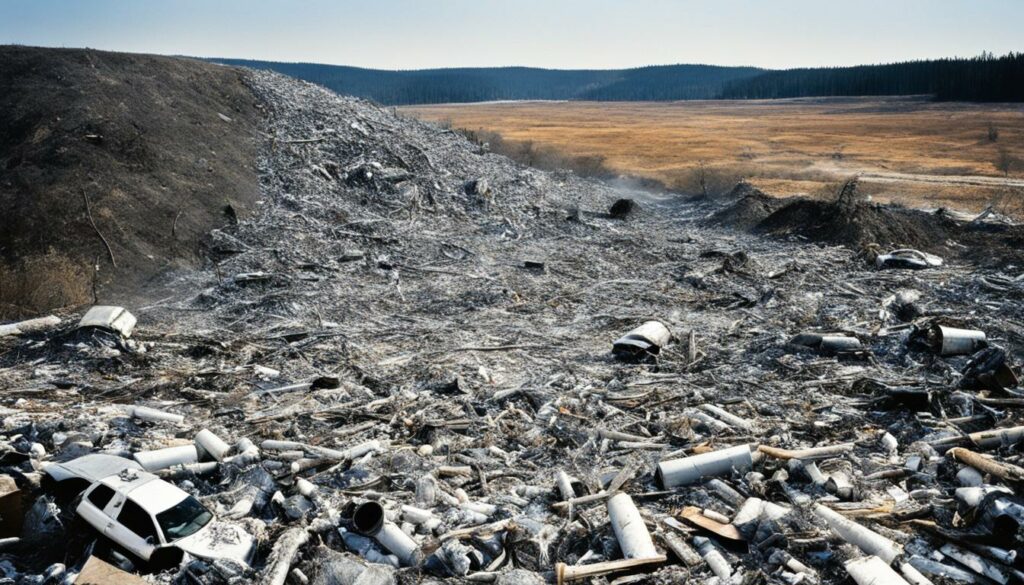
The penalties for breaking these laws include more than just fines. The EPA also watches out for our health. It focuses its efforts on areas already hit hard by pollution. By applying the laws equally, everyone, especially those in need, can be protected.
“In response to President Biden’s directives, EPA Administrator Michael Regan strengthened enforcement of environmental statutes, focusing on communities burdened with pollution.”
By using our current laws and focusing on fairness, the US can tackle health and fairness issues. This approach is important to ensure a better and fairer future for all.
The world of environmental law is changing fast due to new technologies. These tools help us enforce rules and handle environmental data better than before. For example, with machine learning, we might catch more violations without more checks. And deep learning can spot 95% of pollution sources using just 10% of the usual effort.
New tech doesn’t just help follow the law better. It also saves money and resources. Take the example of towns managing storm and waste water together. More than half find it hard to keep things in check. But with predictive analytics, they can fix problems before they start. This way, businesses that use these tools avoid getting into trouble for breaking environmental rules.
Now, the focus is on laws that deal with today’s big problems, like climate change. In Colorado, more small waste handlers followed the rules after they checked themselves. This shows we need to update old ways to fit with new, complicated situations. The aim is to make rules that help both nature and business.
Working together across borders is key in protecting our planet. Since 1972, the number of environmental laws has shot up, with over 1,100 agreements worldwide. There are now more than 350 courts to make sure these rules are followed. This teamwork is crucial for fighting issues like pollution and climate change on a global level.
| Statistic | Data |
|---|---|
| Municipalities failing to manage overflows | 61% |
| Major facilities non-compliant with Clean Water Act | 60-75% |
| Decline in federal inspections (2007-2017) | 45% |
| Increase in environmental laws since 1972 | 38-fold |
| International environmental agreements since 1972 | 1,100+ |
| Increasing compliance in Colorado | 32% to 84% |
In closing, it’s essential to see how ignoring environmental laws has severe impacts. The USA has strong laws like the Clean Air Act and Clean Water Act. Non-compliance puts our environment at risk and leads to serious legal troubles.
Breaking environmental rules has far-reaching effects, not just legal ones. For example, BMW was fined 10 million euros in South Korea for not recalling cars properly. Google also faced a 50 million euro fine in France for breaking GDPR rules. These cases show how businesses can face big financial and legal problems if they don’t follow the law.
Following environmental laws leads to more responsible business behaviour. The sad stories of Kathy Lee Gifford’s and the Spice Girls’ products show companies need to do better. By obeying, they help protect the earth and our health, while also avoiding risks and contributing to a better world.
Obeying green laws isn’t just about legality, but our ethical duty. It’s about saving our resources, keeping us healthy, and helping both businesses and the planet grow. Compliance is vital as we look to a future where taking care of our home is a priority.
Not following environmental rules can lead to big trouble. This includes being fined or facing jail time. The fines are usually more than the money saved by breaking the rules. Breaking the law can also cause many problems for a business. This can include stopping their work and making their reputation look bad.
Making sure we don’t harm the planet is key. Laws are in place to keep our air and water clean. They also stop the land from being destroyed. Sticking to these laws helps everyone by protecting health and nature, while also encouraging new ideas and saving our planet.
In the U.S., important laws are the Clean Air Act and the Clean Water Act. These set standards for the air we breathe and the water we use. There’s also the law to clean up dangerous waste, like the CERCLA. The Environmental Protection Agency makes sure these laws are followed.
Businesses must know several laws to protect nature and animals. For example, there’s the RCRA for waste control and the ESA for saving endangered species. The EPAct helps with using energy wisely. Not following these laws can lead to big problems and costs.
The EPA is a big player in keeping the environment safe. It works to meet and keep high standards. The EPA also helps other groups, does research, and pushes for eco-friendly actions. It’s a key part of making sure laws are followed to protect our planet.
Some key wrongdoings are dumping waste incorrectly or making too much pollution. Using pesticides illegally and not telling the truth about how you follow rules are also big issues. These actions can harm nature, show a lack of care for society, and bring about serious punishments.
Those not following the law can face fines, having to stop working for a while, or going to jail. These penalties are meant to make up for the benefits of breaking the rules. Severe or repeating offences can even lead to time behind bars. Businesses are held to the fire to obey these rules.
There have been big mistakes that harmed the planet, like the Exxon Valdez oil spill. Problems with air and water, trash handling, and using harmful chemicals have also caused issues. These mistakes have led to big legal bills, showing the heavy prices of not sticking to the environmental laws.
EMS tools help companies keep an eye on their impact and get better at protecting the environment. They guide companies to do more than just the basics, raising the bar for responsibility. This approach increases how well companies keep to the rules, get better at what they do, and become more accountable.
To follow the rules, it’s important to get the right permissions, check things often, and make sure everyone in the team knows what’s what. This creates a strong commitment within the company to do the right thing and push for actions that don’t harm the planet.
Following rules can be costly at first but pays off long-term by keeping away big fines and making your brand look good. Not following rules can hit your finances hard and ruin your reputation. This shows how important it is to play by the eco-friendly rules.
The public has a vital role by speaking up in meetings, giving feedback, and helping to check how bad things might be for the planet. This lets everyone’s views help shape laws that keep us and nature safe.
Environmental justice means that everyone gets the same protection from the law, no matter their background. It fights against putting more pollution on poor or minority areas, making sure that the law treats everyone fairly.
New tech is making following the rules easier by helping companies watch what they do in real-time. Laws are now also focusing more on stopping climate change and protecting nature. Countries and groups are working together more to deal with big environmental problems in a joined-up way.